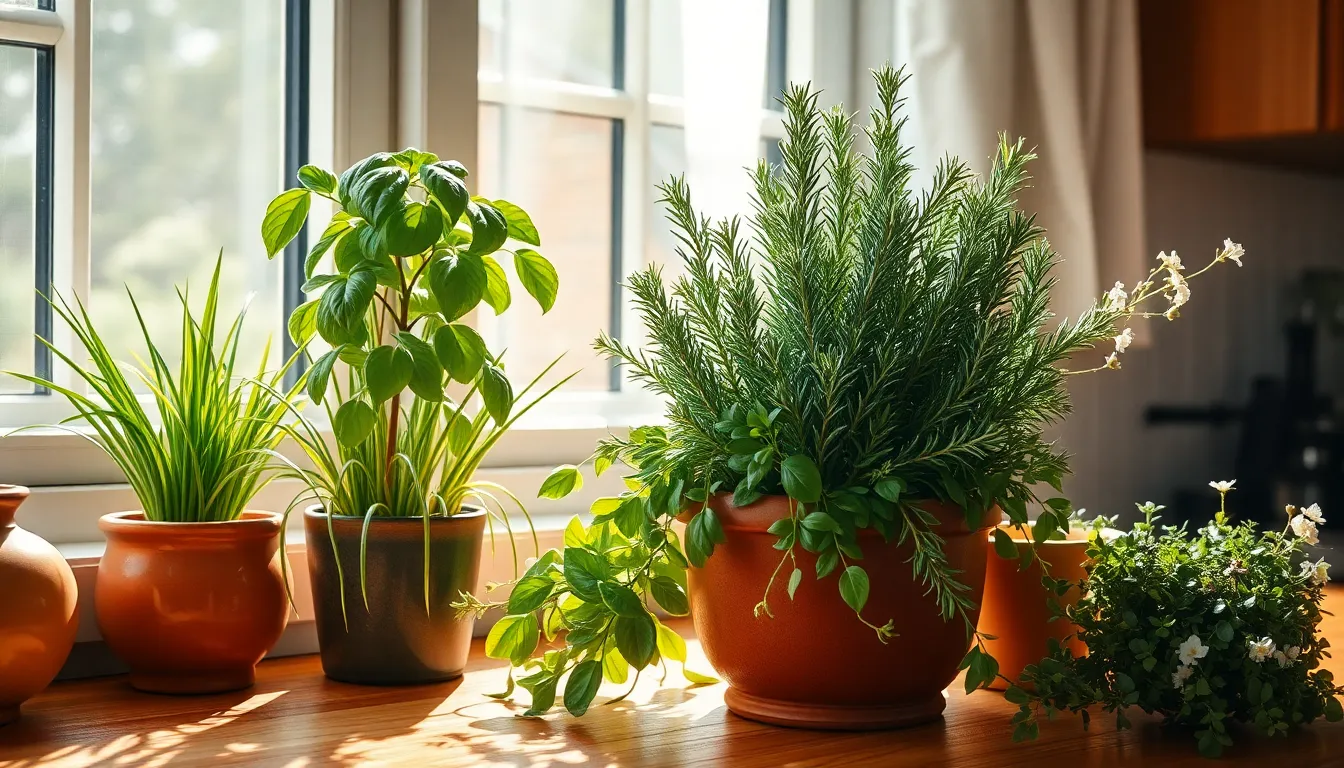Imagine stepping into your kitchen to pick fresh basil for tonight’s pasta, or mint for your morning tea—all without leaving the comfort of your home. Indoor herb gardening is not only a delightful way to ensure your culinary dishes are always bursting with flavor, but it also brings a touch of nature and tranquility into your living space. Whether you’re a novice gardener testing the waters or a seasoned green thumb looking to expand your repertoire, growing herbs indoors can be a rewarding endeavor. With a little guidance and the right conditions, your indoor garden can thrive, offering a year-round bounty of fresh, aromatic herbs.
Herbs have been cherished for centuries, not just for their culinary uses but for their medicinal and aromatic benefits. By choosing to cultivate them indoors, you gain control over their growth environment, shielding them from harsh weather and pests. In this article, we’ll explore the myriad benefits of indoor herb gardening, from improving your home’s air quality to adding a vibrant splash of green to your decor. We’ll guide you through selecting the right herbs for your space, setting up your indoor garden, and ensuring your plants flourish.
You’ll discover tips on light requirements, watering schedules, and the best containers for your indoor herb garden. For beginners, we’ll cover the essentials to get you started on the right foot, and for our more experienced readers, we’ll delve into advanced techniques to maximize your harvest. By the end, you’ll be equipped with the knowledge and inspiration to cultivate your own indoor herb haven, creating a sustainable source of fresh ingredients and a peaceful retreat from the outside world. Let’s embark on this green journey together, making your indoor space a fragrant, flavorful sanctuary.
Benefits of Indoor Herb Gardens
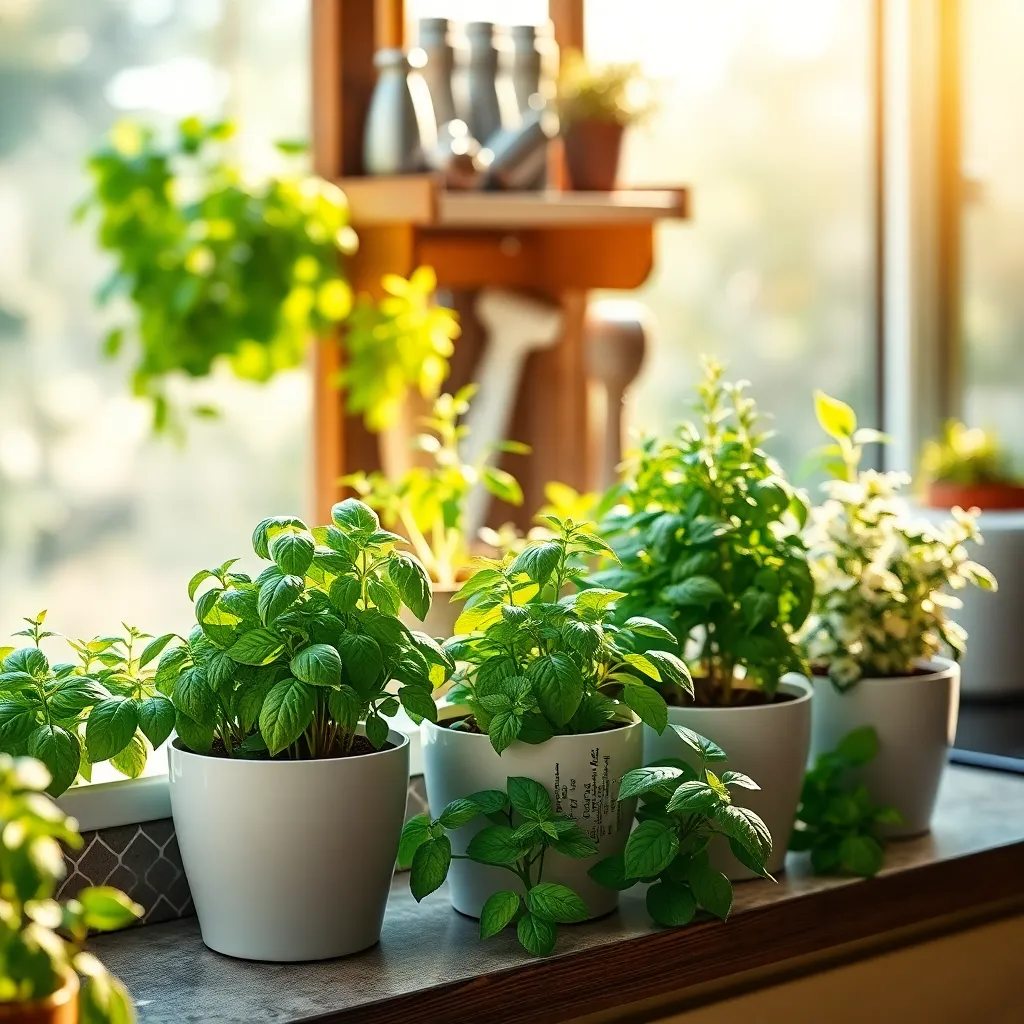
Creating an indoor herb garden offers the convenience of having fresh herbs at your fingertips year-round. This is especially beneficial for those living in areas with harsh winters, as indoor gardens provide a controlled environment optimal for herb growth.
Herbs like basil, mint, and parsley thrive indoors with the proper care. Place your herb pots in a sunny spot, such as a south-facing window, ensuring they receive at least six hours of light each day.
Using the right soil is crucial for indoor herb garden success. Opt for a well-draining potting mix to prevent root rot and encourage healthy plant development.
Watering is another key element, and herbs generally prefer to dry out slightly between waterings. Check the soil moisture by inserting your finger about an inch deep; if it feels dry, it’s time to water.
For those looking to take their gardening skills to the next level, consider using a grow light to supplement natural sunlight, especially during shorter daylight months. This will ensure your herbs have a consistent light source and grow robustly.
Regular pruning not only promotes bushier growth but also keeps your herbs producing more leaves. Snip off the top leaves regularly, which will encourage the plant to branch out and continue thriving.
Choosing Ideal Herb Varieties

When selecting herb varieties for your indoor garden, consider those that thrive in indoor conditions. Herbs like basil, mint, and chives are excellent choices because they adapt well to lower light levels and limited space.
For beginners, starting with easy-to-grow herbs is key. Basil and parsley are forgiving and can quickly boost your confidence with minimal care requirements.
Advanced gardeners might explore herbs like rosemary and thyme, which need more attention. These herbs benefit from a sunny window and require well-draining soil to prevent root rot.
Ensure you use the right soil mix to support healthy growth. A lightweight potting mix that retains moisture yet allows for good drainage is ideal, preventing overwatering issues.
Watering frequency is crucial for maintaining healthy herbs indoors. Most herbs prefer their soil to dry slightly between waterings, so check the top inch of soil before adding more water.
For those wanting to maximize growth, consider rotating your herb pots regularly. This ensures even light exposure, promoting balanced growth and preventing plants from leaning towards the light source.
Optimizing Indoor Growing Conditions
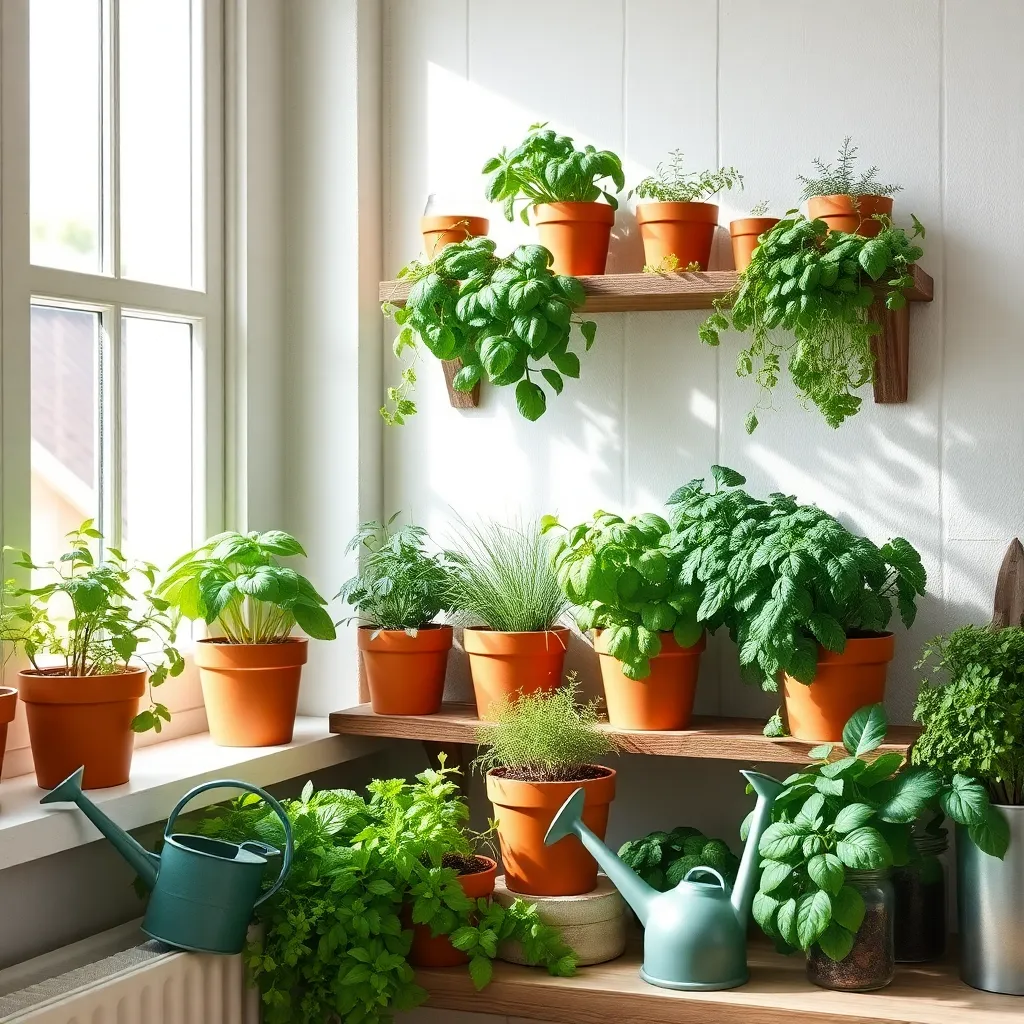
To optimize indoor growing conditions for your herbs, ensure you are providing them with the right amount of light. Most herbs thrive in bright, indirect sunlight, so placing them near a south-facing window or under a grow light can be beneficial for their growth.
Soil quality is paramount for healthy herb growth indoors. Use a well-draining potting mix specifically designed for herbs, which will provide the necessary nutrients and prevent waterlogging.
Watering is a crucial aspect of indoor herb care. It’s best to water your herbs when the top inch of soil is dry to the touch, ensuring you don’t overwater, which can lead to root rot.
Humidity levels can significantly affect the growth of your indoor herbs. Consider using a humidity tray or a small humidifier in dry environments to maintain adequate moisture levels around your plants.
For those looking to advance their indoor gardening skills, consider rotating your herb pots every few days. This ensures even growth by exposing all sides of the plant to light and encourages a bushier, more robust plant structure.
Simple Care Tips for Success
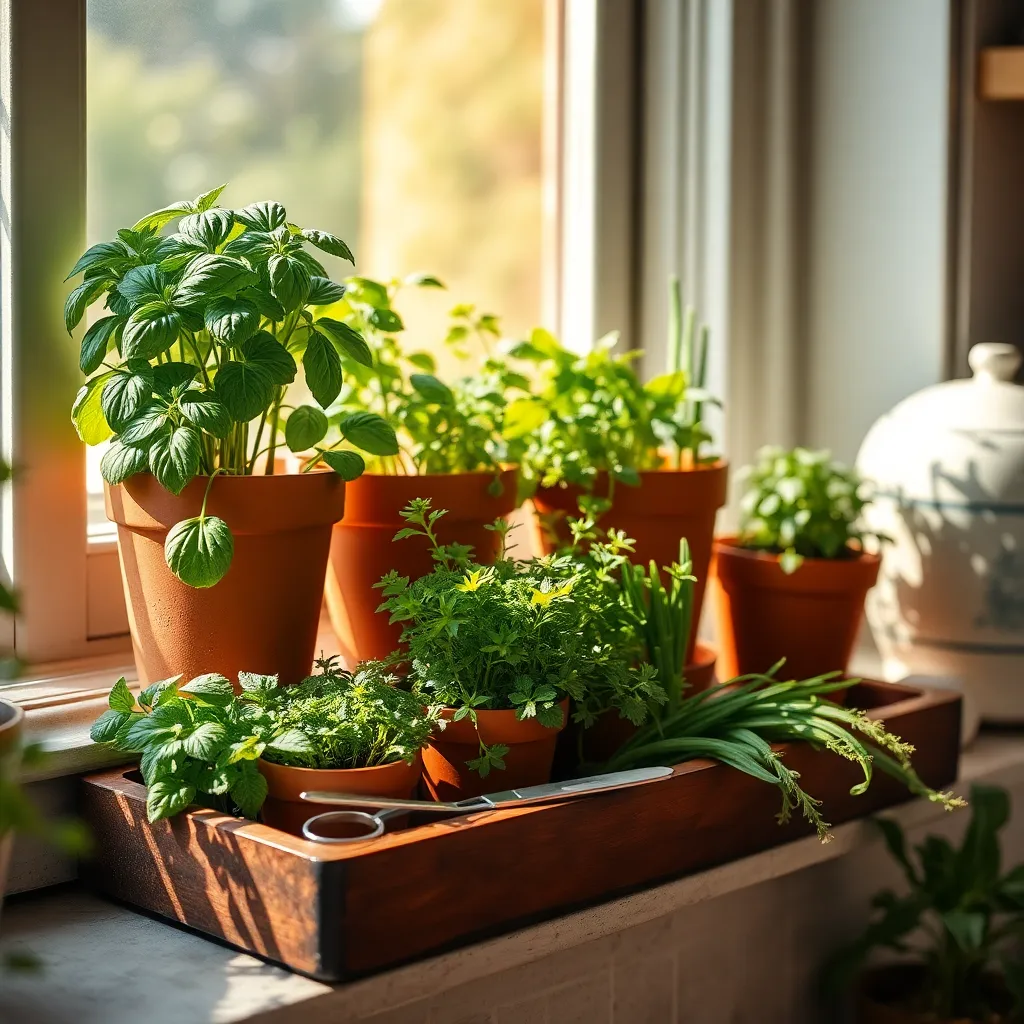
Starting with the basics, ensure your herbs are planted in a well-draining potting mix to prevent root rot. A mix designed for indoor plants or one containing perlite or vermiculite works best for maintaining the right moisture balance.
Proper watering is crucial, so be sure to water your herbs thoroughly, but allow the top inch of soil to dry out between waterings. Overwatering is a common mistake, so always check the soil moisture level with your finger before adding more water.
Lighting is another critical factor; most herbs thrive in bright, indirect sunlight. Consider placing them near a south-facing window or use a grow light for about 12 to 16 hours a day to supplement natural light.
For those looking to enhance their herb-growing skills, regular pruning encourages bushier growth and prevents your herbs from becoming leggy. Snip the tops of the plants regularly to promote branching and a fuller appearance.
Feeding your herbs with a balanced, water-soluble fertilizer every four to six weeks can provide them with the necessary nutrients to thrive indoors. Follow the instructions on the fertilizer package to avoid over-fertilizing, which can harm your plants.
For advanced care, consider rotating your pots every few days to ensure even light distribution and prevent your herbs from leaning. This simple step can significantly improve their health and aesthetics.
Culinary and Health Advantages
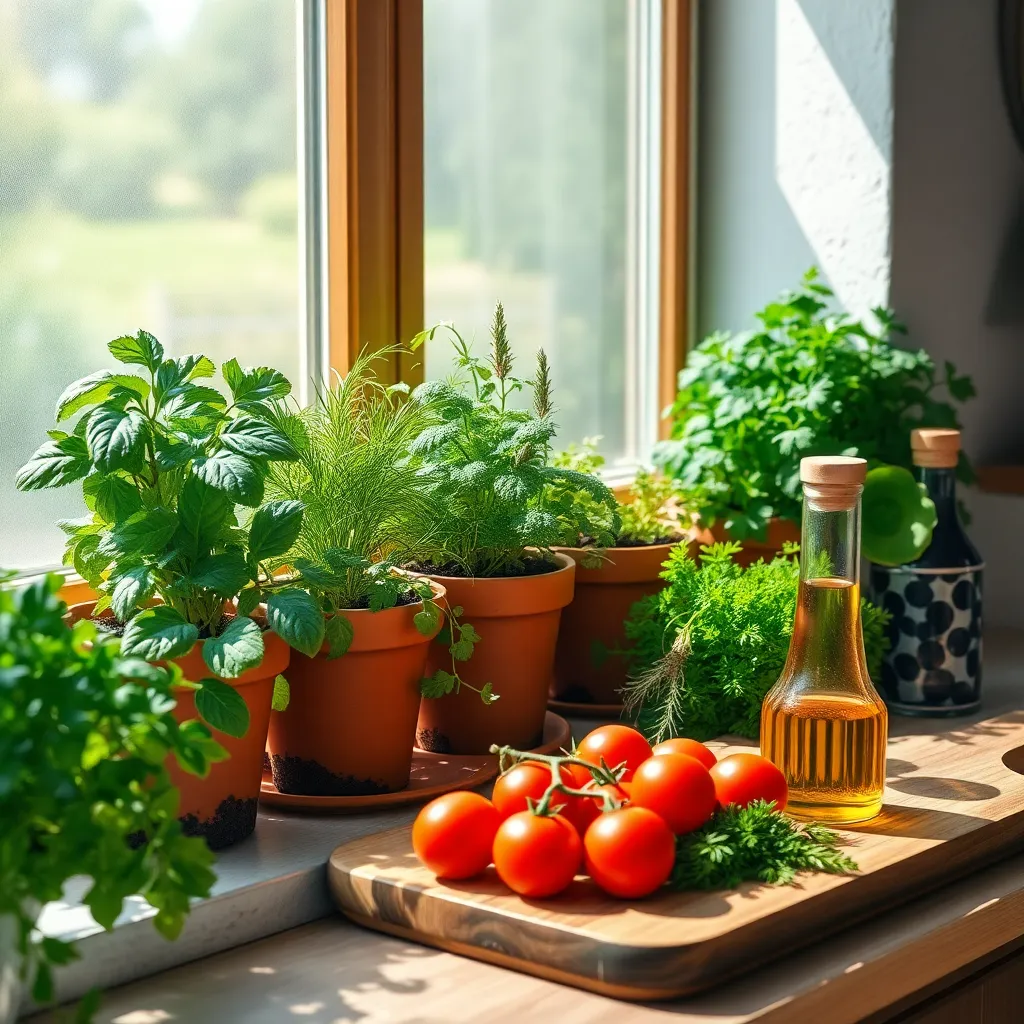
Growing herbs indoors offers an array of culinary benefits that can transform your cooking. With easy access to fresh herbs like basil, parsley, and thyme, you can elevate dishes with fresh flavors and aromas that dried herbs simply can’t match.
Besides their taste, herbs provide substantial health advantages. Many herbs, such as mint and rosemary, are packed with antioxidants and have anti-inflammatory properties that support overall well-being.
To ensure your indoor herbs thrive, use a light, well-draining potting mix that encourages healthy root development. Ensure your pots have good drainage holes to prevent waterlogging, which can lead to root rot.
Consider placing your herb pots on a sunny windowsill where they can receive at least six hours of light daily. If natural light is limited, supplement with grow lights to provide the necessary light spectrum for robust growth.
Water your herbs when the top inch of soil feels dry, but be cautious not to overwater. Most herbs prefer a slightly dry environment, so it’s better to underwater than to overwater.
For more advanced care, occasionally feed your herbs with a diluted liquid fertilizer to boost growth. This is especially important during the growing season when plants are actively producing new foliage.
Conclusion: Growing Success with These Plants
In nurturing relationships, much like planting herbs indoors, the smallest actions can yield the most rewarding results. Through this article, we’ve explored five key concepts: the importance of consistent care, the joy of shared experiences, the benefits of a calming environment, the growth that comes from patience, and the delight of savoring the fruits of your labor together. These insights remind us that relationships, like thriving herb gardens, require attention, mutual involvement, and a nurturing environment.
As your next step, take a moment today to engage in a simple, shared activity with your partner—perhaps cooking together using fresh herbs. This small act can strengthen your bond and create lasting memories.
Remember, relationships flourish with continuous effort and commitment. Save or bookmark this article to revisit these principles whenever you need a gentle reminder of how to cultivate love and connection in your life. By embracing these practices, you are planting the seeds for a flourishing relationship that will grow stronger with time, promising a future of shared happiness and success. Your journey towards a more fulfilling relationship starts now—take that first step today!

